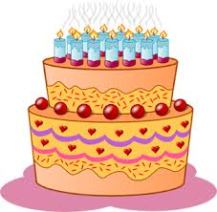World Read Aloud Day Blogger Challenge
Now & Then
Reading aloud to kids (anyone, for that matter) is one of my favorite things to do. So of course I’ll be celebrating World Read Aloud Day on March 6th. To help get ready, here are some of my thoughts about reading, now, and when I was ten.
1. I think everyone in the world should read…
When I was 10: Charlotte’s Web was the first chapter book I read on my own and I was sure everyone would love it as much as I did. (I still do!)
Now: It’s so difficult to narrow this down, so I’ll try categories.
Adult fiction: Bel Canto by Ann Patchett
YA fiction: The Book Thief by Marcus Zusak
Middle Grade fiction: The Birchbark House by Louise Erdrich
Picture Book: Amos & Boris by William Steig
2. If I could listen to anyone in the world read aloud to me it would be…
When I was 10: The elementary school I went to didn’t have a library, but the town library was right next door. So every week we walked there to check out books. After we arrived, we’d sit with a friend in one of the window seats and listen to Mrs. Rothschild read to us. Mrs. Rothschild was a tiny woman with a steel gray bun who, I found out later, was a former teacher and author. All I knew then was that I loved listening to her read to us every week.
Now: Over the past 6 months or so, I’ve listened to all of L.A. Meyer’s Bloody Jack books, narrated by Katherine Kellgren. Kellgren does an incredible job differentiating the voices with subtleties in accents and tone. She also has a beautiful singing voice.
3. When I read aloud, my favorite character to impersonate is…
When I was 10: I sang much more than I read when I was 10. Funny Girl was my favorite soundtrack, so I’d have to say Fanny Brice!
Now: Daniel in Daniel O’Rourke by Gerald McDermott. I love his lilting Irish brogue.
4. The genre that takes up the most room on my bookshelf (or e-reader) is…
When I was 10: No contest, I loved fiction.
Now: Nothing has changed. Fiction still dominates my TBR pile.
5. The last book I wish I’d written or inspired me to write my own story is…
When I was 10: A poster for The Hobbit inspired the first story I remember writing, a science fiction story about a spaceship crashing in a swamp near my house.
Now: “Paolo and Francesca” from Dante’s Inferno. This is something I’m actually working on.
This was last week’s challenge, so I’ll be back later in the week with a snapshot of my reading life. Happy Reading!


















